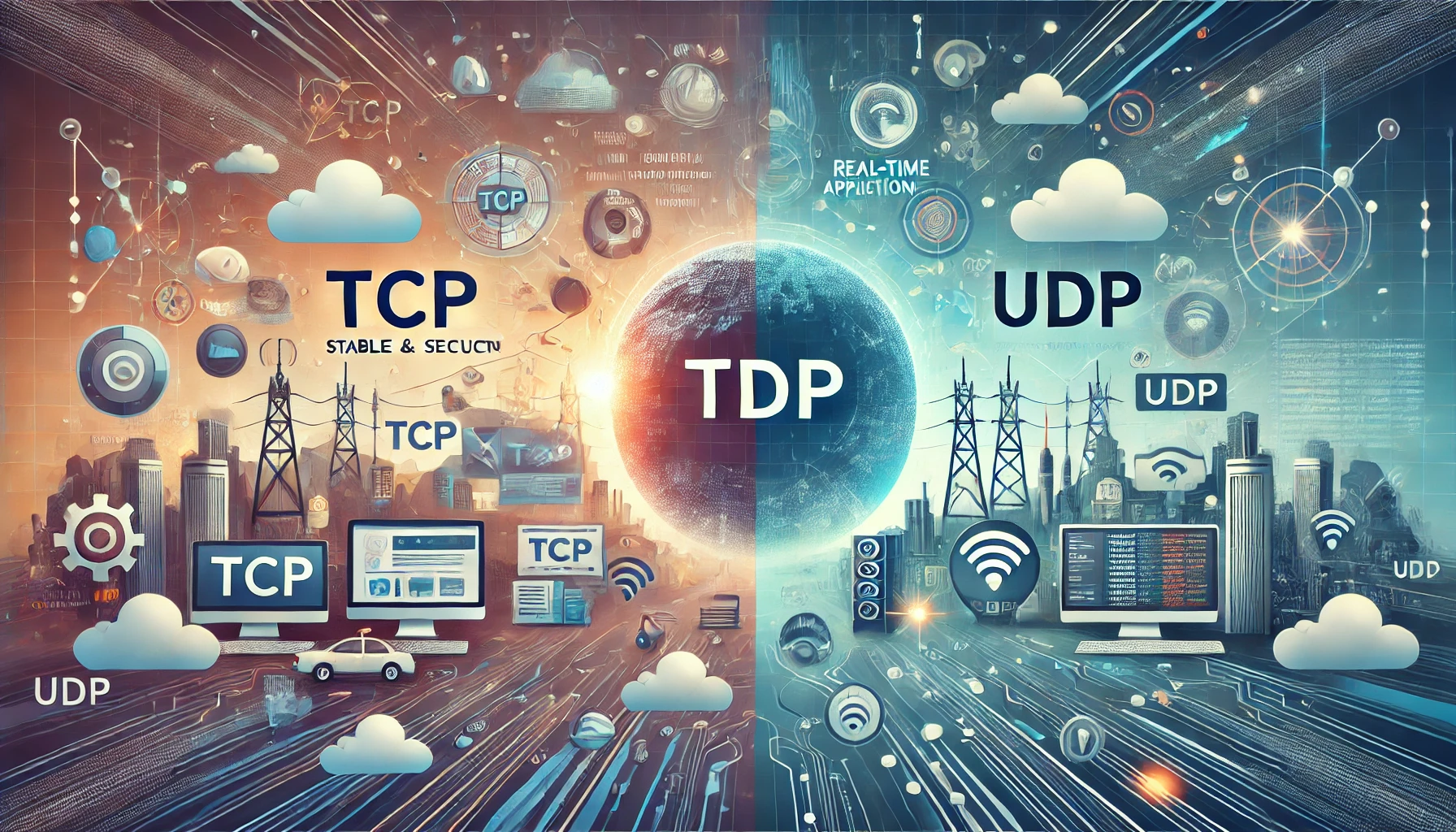TCP vs UDP
 Manshi Tyagi
Manshi Tyagi
When we talk about data transmission over networks, the two most commonly used protocols are TCP (Transmission Control Protocol) and UDP (User Datagram Protocol). Both of these protocols are essential for different purposes, and understanding their differences is crucial in choosing the right one for your network applications. Let’s break down TCP and UDP in a structured way, comparing their characteristics, features, and use cases.
What is TCP?
TCP is a connection-oriented protocol. It ensures reliable communication between devices by establishing a connection before data is sent. It guarantees that data will be delivered in the correct order and checks for errors during transmission.
Key Features of TCP:
Connection-Oriented: Establishes a connection before data transfer, ensuring a reliable communication channel.
Reliability: Guarantees data delivery through acknowledgment mechanisms and retransmission of lost packets.
Ordered Data Transfer: Ensures that data packets are received in the same order they were sent.
Flow Control: Manages data transmission rates to prevent congestion.
Error Detection and Correction: Utilizes checksums to detect errors and ensures data integrity.
Example:
Web browsing (HTTP/HTTPS)
File transfer (FTP)
Email (SMTP, IMAP)
Remote login (SSH)
What is UDP?
UDP, on the other hand, is a connectionless protocol. It doesn't establish a connection or ensure data delivery. UDP sends data packets (datagrams) to the receiver without confirming if they were received.
Key Features of UDP:
Connectionless: Sends data without establishing a prior connection, does not require a handshake before data transfer. Data is sent directly to the receiver.
Unreliable: No guarantee that data will reach its destination. If packets are lost, they are not retransmitted.
No Flow Control: It does not manage the rate of data transfer.
No Error Correction: Only provides basic error checking, but does not fix errors in transmission.
Faster: Since there’s no overhead for connection setup or error correction, UDP is faster than TCP.
Example:
Video streaming (YouTube, Netflix)
Online gaming
Voice over IP (VoIP) like Skype
DNS (Domain Name System)
Broadcasting
Key Differences Between TCP and UDP
| TCP | UDP |
| Connection-oriented | Connectionless |
| Reliable (data is guaranteed to arrive) | Unreliable (data might be lost or corrupted) |
| Error detection and correction | Basic error detection only |
| Data is ordered | Data may be unordered |
| Slower due to overhead | Faster due to minimal overhead |
| Flow control (prevents congestion) | No flow control |
| File transfers, web browsing | Streaming, gaming, VoIP |
When to Use TCP vs UDP?
When deciding between TCP and UDP, use TCP when reliable, error-free data delivery is essential, such as in file transfers, web browsing, and email, where the order of data matters and packet loss or duplication cannot be tolerated. On the other hand, UDP is ideal when speed and low latency are crucial, such as in real-time applications like live streaming, online gaming, and VoIP, where some data loss or out-of-order delivery is acceptable, and reliability can be handled at a higher level by the application itself.
If you found this helpful, leave a like! ❤️
Subscribe to my newsletter
Read articles from Manshi Tyagi directly inside your inbox. Subscribe to the newsletter, and don't miss out.
Written by

Manshi Tyagi
Manshi Tyagi
Hi, I'm Manshi, a full-stack web developer. I write about building web apps and my journey in tech. Follow along as I share what I'm learning and creating.